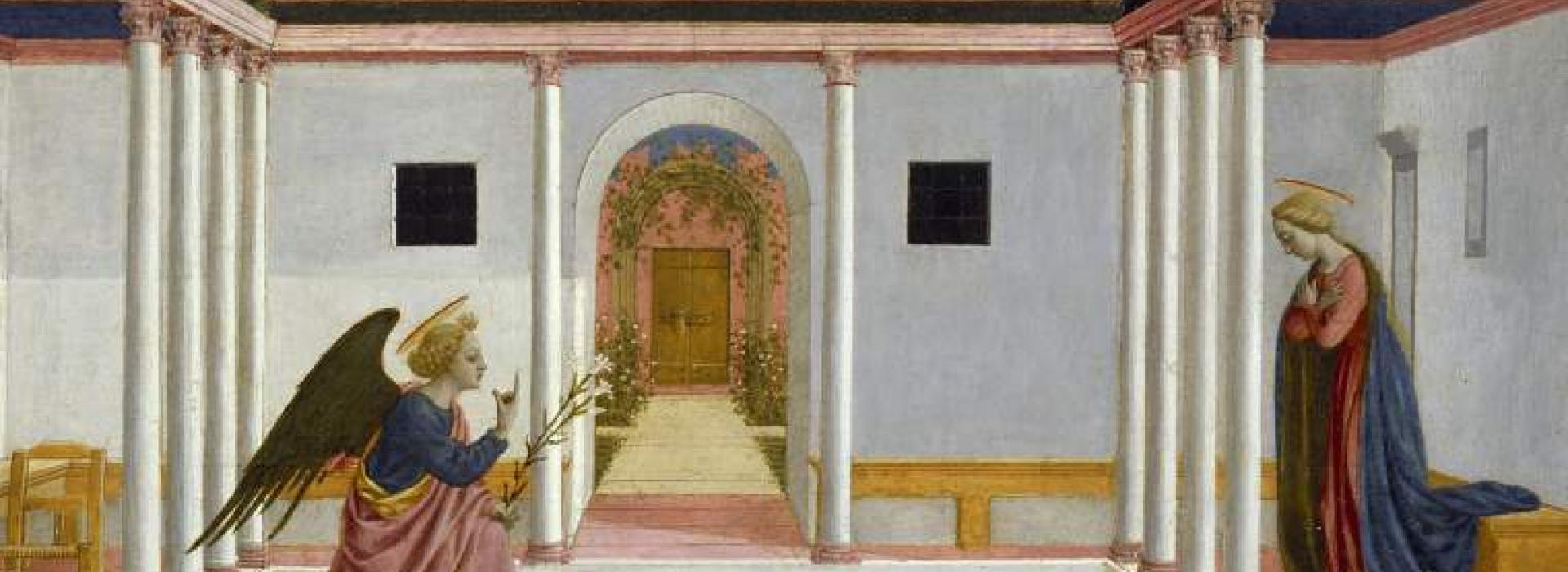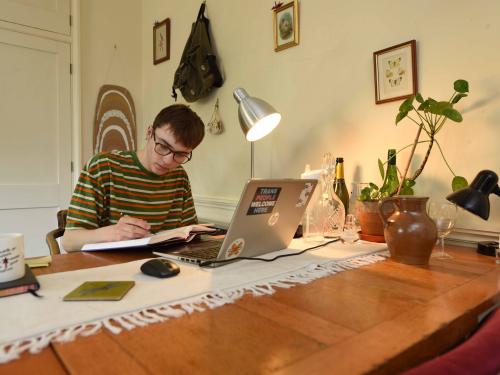Breadcrumb
History of Art
History of Art is a lively, stimulating and rigorous course for those with a committed interest in visual culture. The course places a high priority on first-hand study of works of art and architecture, both within Cambridge and further afield.
We take full advantage of the resources of Cambridge itself, teaching regularly in the University's museums, especially the Fitzwilliam Museum and Kettle's Yard, as well as studying the city's historic buildings and the art collections held by individual colleges. The curatorial staff of the Fitzwilliam Museum take an active part in the teaching programme, as do staff in related disciplines around the University.
The History of Art course is designed to give students both a broad training in the history of art, and to allow for highly focused study in particular areas of interest. The one-year Part I lays the foundations with general survey courses in the ‘objects of art history’, the ‘making of art’, and the ‘meaning of art’. Towards the end of the year students write a short dissertation on a single object or building of their choice in Cambridge. This is followed by a two-year Part II course where students take a more focused approach to particular topics of their choosing, supplemented by courses on the history and methodology of art history, and on issues relating to art’s collection and display.
The Part II course is based on a menu of Option Papers taught by individual members of the Department and invited speakers. The options offered make the most of the research interests and enthusiasms of the members of staff concerned. Each student is free to choose their own individual range of subjects, either concentrating on a particular period or country, or adopting a wider range of themes. The Option Papers require serious study at an advanced level. Students often surprise themselves in the standard that they can achieve at this level, and appreciate the rewards of such an ambitious and intensive approach. Each Part II student also submits a dissertation on a theme of their choice, allowing individual research and the development of original and independent analysis.
History of Art at Peterhouse
Peterhouse is one of the best situated colleges in Cambridge for History of Art – it is not only next door to the Department’s buildings in Trumpington Street, but its extensive grounds encircle the Fitzwilliam Museum, which was built on land sold to the University for that purpose in 1823. As in other small subjects, most teaching is organised at departmental level, so students at the College can take advantage of the full range of teaching options. Peterhouse's Director of Studies is Dr Laura Slater. Her research is focussed on medieval Britain and Europe c. 1050-1400, including the cultural consequences of the crusades and interactions with the Holy Land. She also investigates the cultural patronage and political activities of medieval women.
Course Requirements
Applicants to read History of Art usually have a broad range of intellectual interests, and arts and sciences A levels are equally welcome. There is no need to have studied the subject formally before, and no subjects are considered essential at A level (or equivalent), but essay-based subjects such as English, a modern foreign or classical language, History, History of Art and Religious Studies would be good preparation for the course. We would generally expect the A* part of the typical A level offer to be in such a subject.
The application process
Candidates should expect two interviews. During their interviews, they may be shown images of works of art and/or architecture to analyse. This is not a test of identification or art historical knowledge but allows for the discussion of some of the issues raised by visual images. Candidates may be asked to send two examples of recent written work.
Typical conditional offers
Our typical conditional offer in History of Art for a candidate taking A levels is A*AA. IB offers are usually for a minimum of 41-42 points, to include 776 or 777 at Higher level in relevant subjects. Offers are designed to be realistic, taking into account individual circumstances, and to reflect potential and likely levels of achievement. Most of those who receive offers will attain the grades required.
Further resources and reading
If you want to explore the History of Art further we suggest the following books:
Ernst H. Gombrich, The Story of Art
Hugh Honour and John Fleming, A World History of Art
Kenneth Clark, Civilisation: A Personal View


